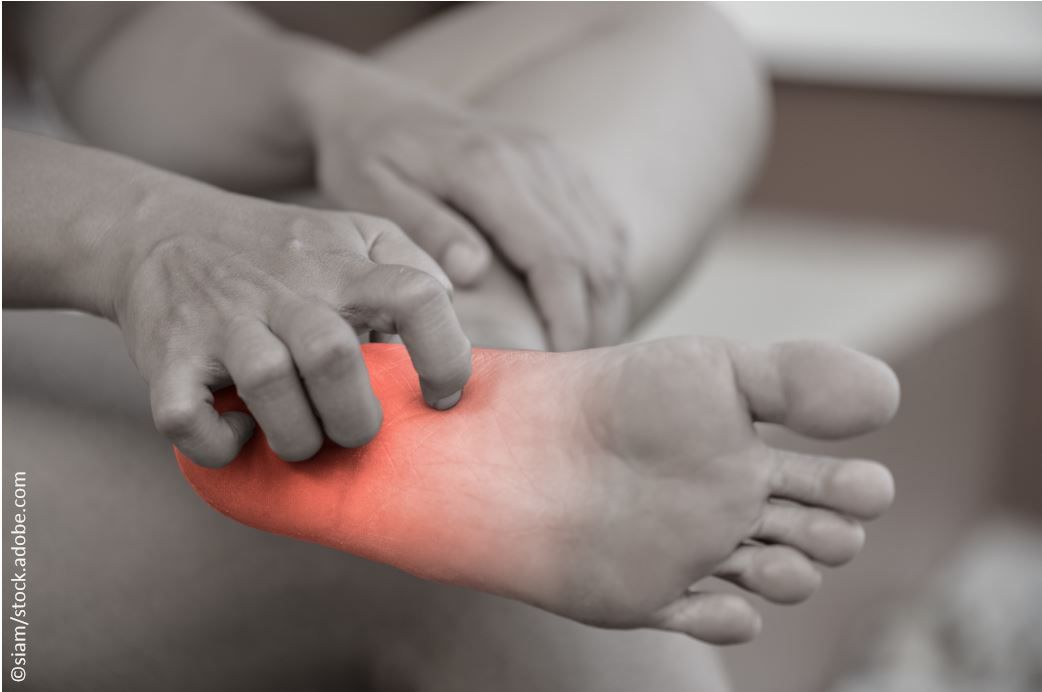Feet, Don’t Fail Me Now! Averting a Complication of Diabetes
Up to 50% of patients with diabetes may have signficant neuropathy, yet be asymptomatic. Here's how to avoid or attenuate the condition.
©siam/adobe.stock.com

What affects more than 3 million patients per year in the US, has no cure or treatment, and may be present in a significant, yet asymptomatic form in ~50% of patients?
Diabetic neuropathy.
Continuing with my look at complications of diabetes, I’d like to offer some clinical pearls on neuropathy. This can be as annoying as it can be abiding in its consequences. How? Say a patient who has diminished or no sensation in her feet walks barefoot and steps on a foreign object that induces a wound. She doesn’t inspect her feet daily (as we advise!). Weeks, months, maybe even years, pass, seemingly quietly. Sure enough, an infection has tunneled to her bone - osteomyelitis, and she, being in the worst-case scenario, must undergo amputation of toes.
1. What is a crucial recommendation?
Preventing neuropathy from developing is key! Please remind patients to avoid walking barefoot, and to wear socks (no flip-flops!).
Please also implore your patients to inspect their feet, daily! Advise them to take just a few seconds to examine the skin of their soles, to check for ulcers, or any change that may suggest an infection. Some individuals may find it easier to use a mirror to do this. Others may enlist the help of a spouse, partner, friend, or roommate. The key is to do this daily.
2. What’s a simple test to check for diabetic neuropathy in the clinic?
The monofilament test is something you can readily do in just a minute or two. Conduct this once a year, and if you note sensory loss, each quarter.
Patients may not feel incipient peripheral neuropathy secondary to diabetes. This test may help detect early sensory changes.
Check out this resource-“How to do a 3-minute diabetic foot exam”1-or one of the many others available onlineon performing the test, including this one from the Joslin Diabetes Center.
3. What’s the best technique for performing the monofilament test?
Here are some tips on using a Semmes-Weinstein 10-g monofilament:
1. Apply the monofilament perpendicular to the foot skin surface, allowing the filament to bend. Keep contact with the skin for about 1.5 seconds.
2. The first areas to have neuropathy are usually in the 1st and 3rd toes.
What if you are out of monofilaments, or don’t have your 128-Hz tuning fork? Worry not, because you can use your hand. This is also known as the Ipswich Touch Test (ITT). The physician lightly places the index finger on the patient’s first, third, and fifth toes for 1 to 2 seconds.1 With eyes closed, the patient indicates by saying “yes” whenever they feel the touch. A study found that the ITT was just as sensitive and specific as the monofilament.2
Diabetic neuropathy can be challenging for patients. Yet, John Hare, MD, the Medical Director of Joslin Diabetes Center’s Affiliated Centers program, asks us to take heart:
“Hemoglobin A1C readings should ideally be at 7.0% or lower. Those that are consistently near or higher than 8% cause concern that any diabetes complication, including neuropathy, may develop. The good news is that the Diabetes Control and Complications Trial shows that people who keep their blood sugars consistently in this healthful range can decrease their risk of nerve damage by more than 50%. Getting diabetes under better control also may help limit the amount of damage caused by neuropathy once it's developed."3
References:
1. Miller JD, et al. How to do a 3-minute diabetic foot exam. J Fam Pract. 2014;63:646-649, 653-656.
2. Rayman G, et al. The Ipswich Touch Test: a simple and novel method to identify inpatients with diabetes at risk of foot ulceration. Diabetes Care. 2011;34:1517-1518.
3. Diabetic Neuropathy (Nerve Damage) – An Update. Joslin Diabetes website. http://www.joslin.org/info/diabetic_neuorpathy_nerve_damage_an_update.html. Accessed September 23, 2018.